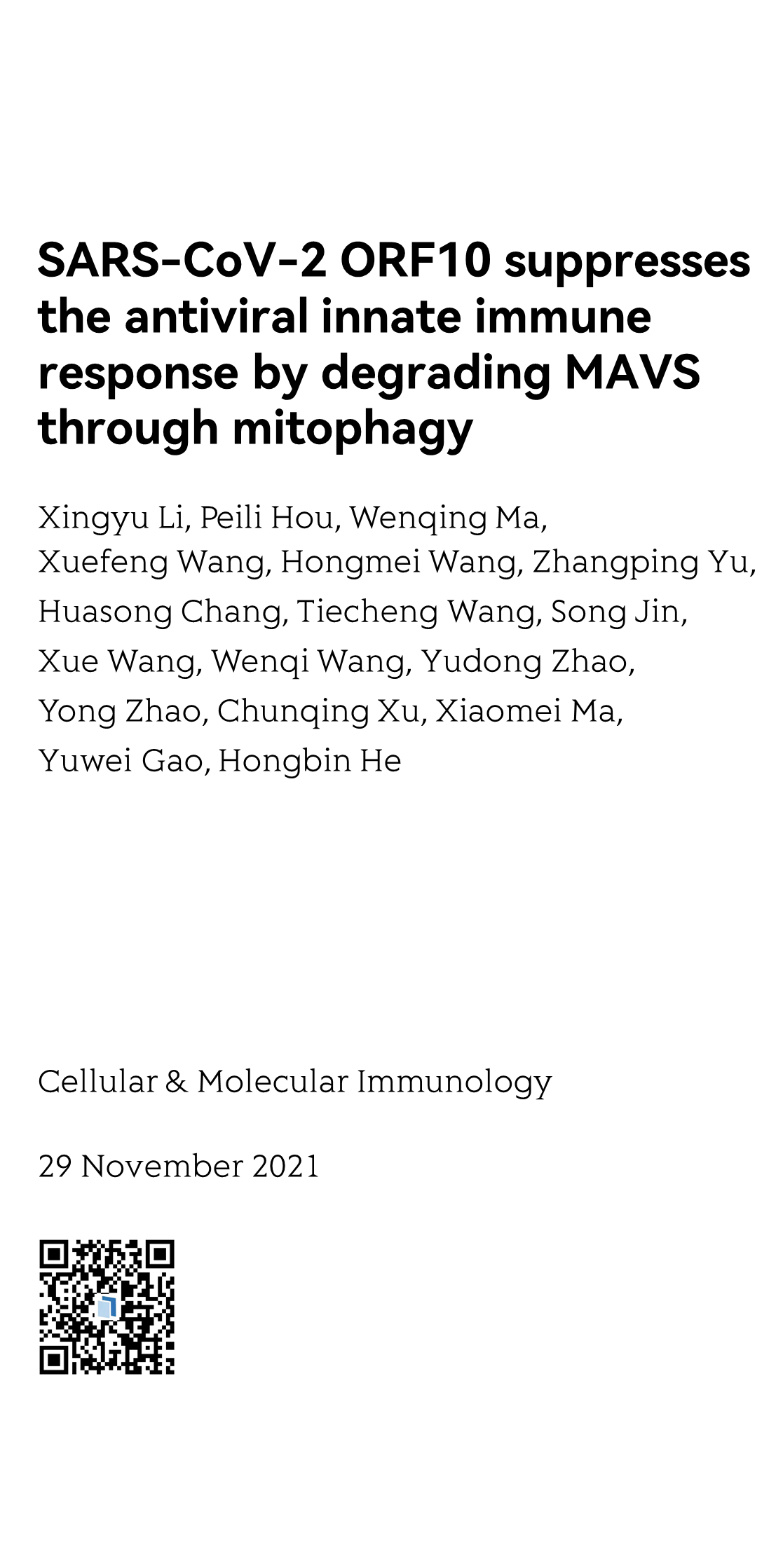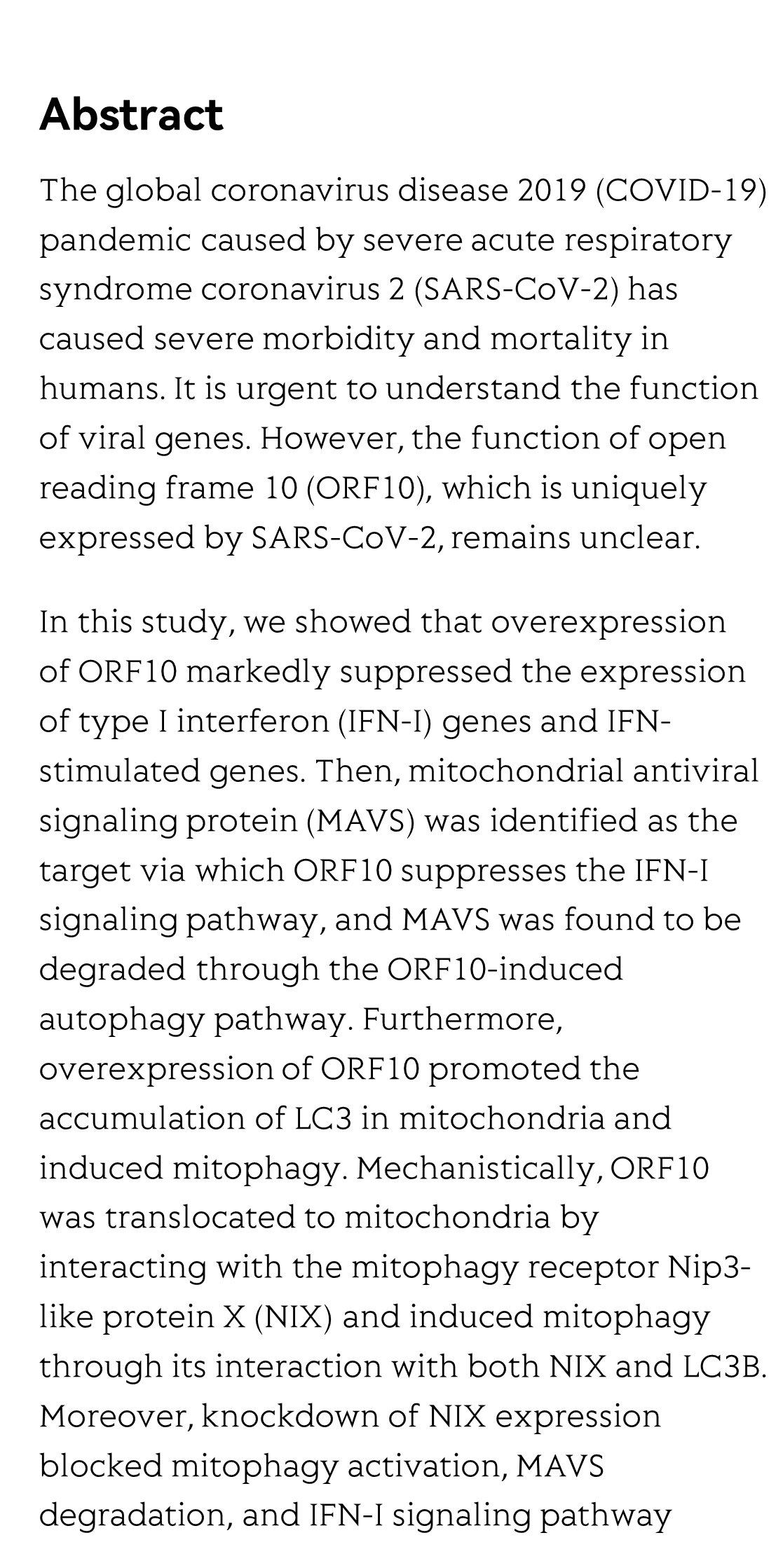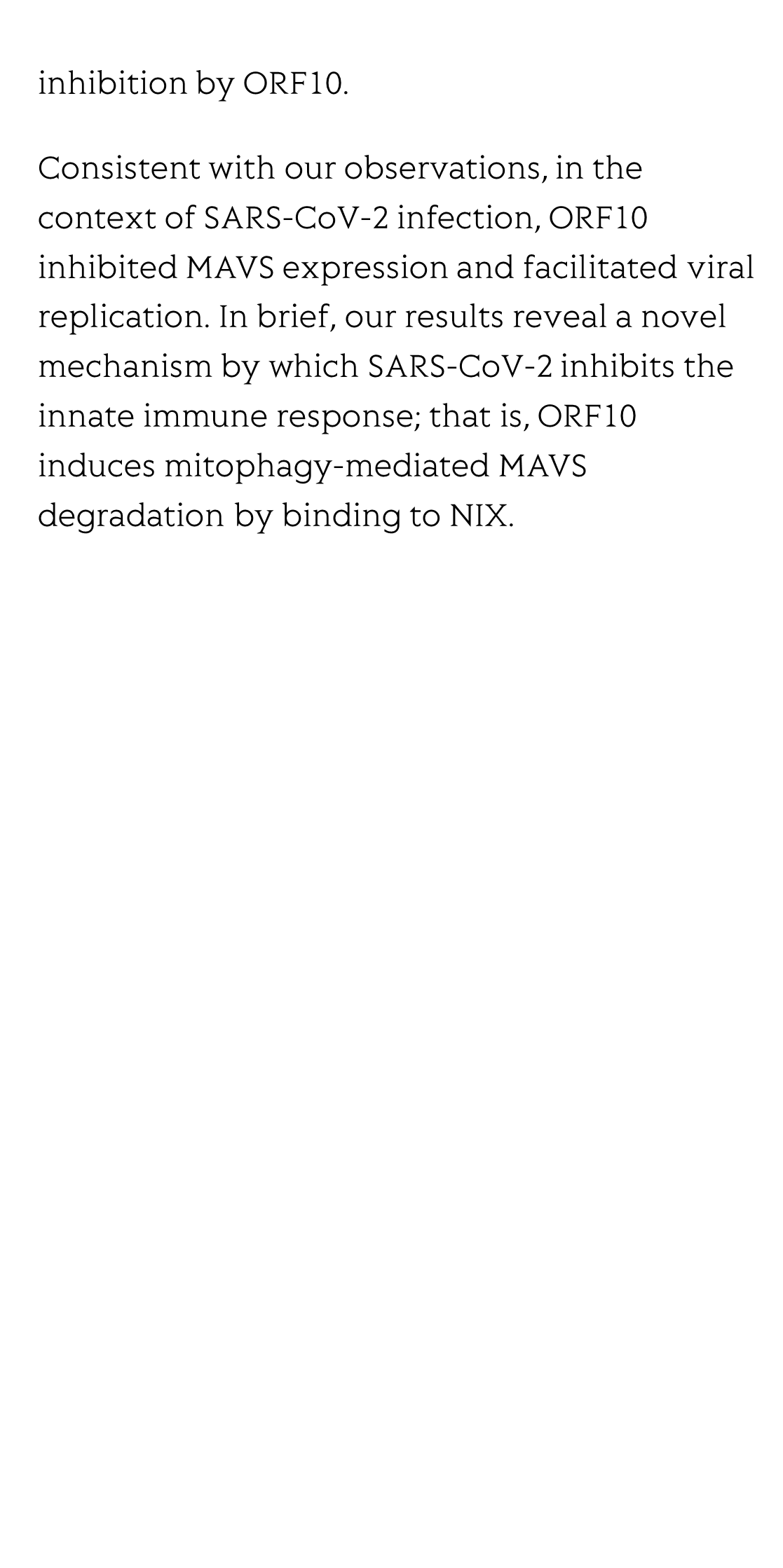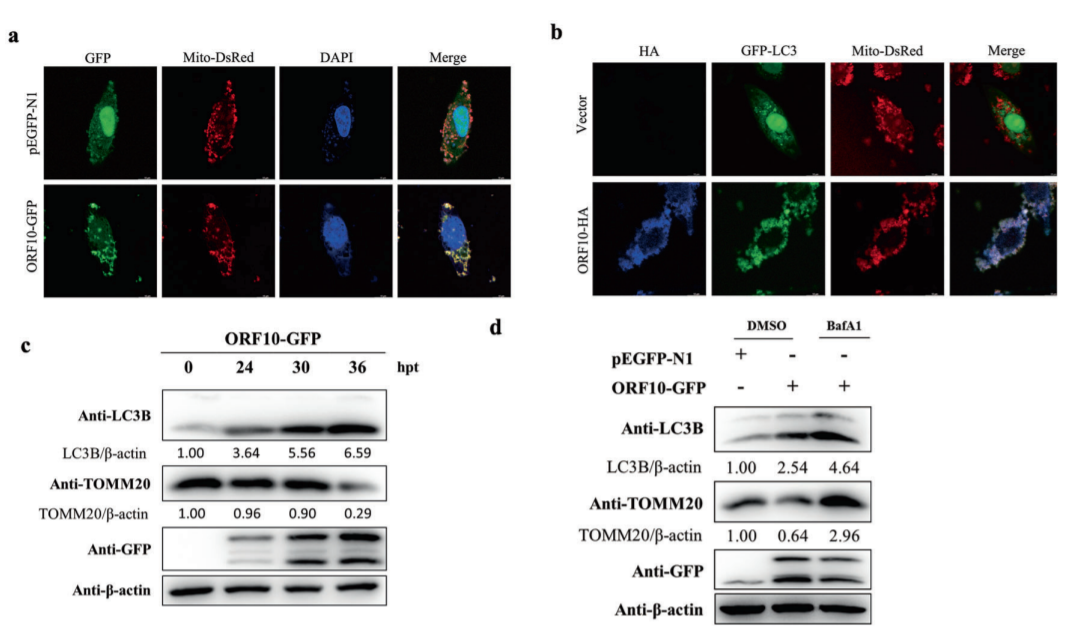(Peer-Reviewed) SARS-CoV-2 ORF10 suppresses the antiviral innate immune response by degrading MAVS through mitophagy
Xingyu Li 李兴宇 ¹, Peili Hou 侯佩莉 ¹, Wenqing Ma 马文青 ¹, Xuefeng Wang 王雪峰 ², Hongmei Wang 王洪梅 ¹, Zhangping Yu ¹, Huasong Chang ¹, Tiecheng Wang 王铁成 ², Song Jin ¹, Xue Wang ¹, Wenqi Wang ¹ ², Yudong Zhao ², Yong Zhao ², Chunqing Xu ¹, Xiaomei Ma ¹, Yuwei Gao 高玉伟 ², Hongbin He 何洪彬 ¹
¹ Ruminant Diseases Research Center, College of Life Sciences, Shandong Normal University, Jinan, 250014, People’s Republic of China
中国 济南 山东师范大学生命科学学院 反刍动物疾病研究中心
² Changchun Veterinary Research Institute, Chinese Academy of Agricultural Sciences, Changchun, 130122, People’s Republic of China
中国 长春 中国农业科学院长春兽医研究所
Abstract
The global coronavirus disease 2019 (COVID-19) pandemic caused by severe acute respiratory syndrome coronavirus 2 (SARS-CoV-2) has caused severe morbidity and mortality in humans. It is urgent to understand the function of viral genes. However, the function of open reading frame 10 (ORF10), which is uniquely expressed by SARS-CoV-2, remains unclear.
In this study, we showed that overexpression of ORF10 markedly suppressed the expression of type I interferon (IFN-I) genes and IFN-stimulated genes. Then, mitochondrial antiviral signaling protein (MAVS) was identified as the target via which ORF10 suppresses the IFN-I signaling pathway, and MAVS was found to be degraded through the ORF10-induced autophagy pathway. Furthermore, overexpression of ORF10 promoted the accumulation of LC3 in mitochondria and induced mitophagy. Mechanistically, ORF10 was translocated to mitochondria by interacting with the mitophagy receptor Nip3-like protein X (NIX) and induced mitophagy through its interaction with both NIX and LC3B. Moreover, knockdown of NIX expression blocked mitophagy activation, MAVS degradation, and IFN-I signaling pathway inhibition by ORF10.
Consistent with our observations, in the context of SARS-CoV-2 infection, ORF10 inhibited MAVS expression and facilitated viral replication. In brief, our results reveal a novel mechanism by which SARS-CoV-2 inhibits the innate immune response; that is, ORF10 induces mitophagy-mediated MAVS degradation by binding to NIX.
Meta-lens digital image correlation
Zhou Zhao, Xiaoyuan Liu, Yu Ji, Yukun Zhang, Yong Chen, Zhendong Luo, Yuzhou Song, Zihan Geng, Takuo Tanaka, Fei Qi, Shengxian Shi, Mu Ku Chen
Opto-Electronic Advances
2025-07-29
Broadband ultrasound generator over fiber-optic tip for in vivo emotional stress modulation
Jiapu Li, Xinghua Liu, Zhuohua Xiao, Shengjiang Yang, Zhanfei Li, Xin Gui, Meng Shen, He Jiang, Xuelei Fu, Yiming Wang, Song Gong, Tuan Guo, Zhengying Li
Opto-Electronic Science
2025-07-25







